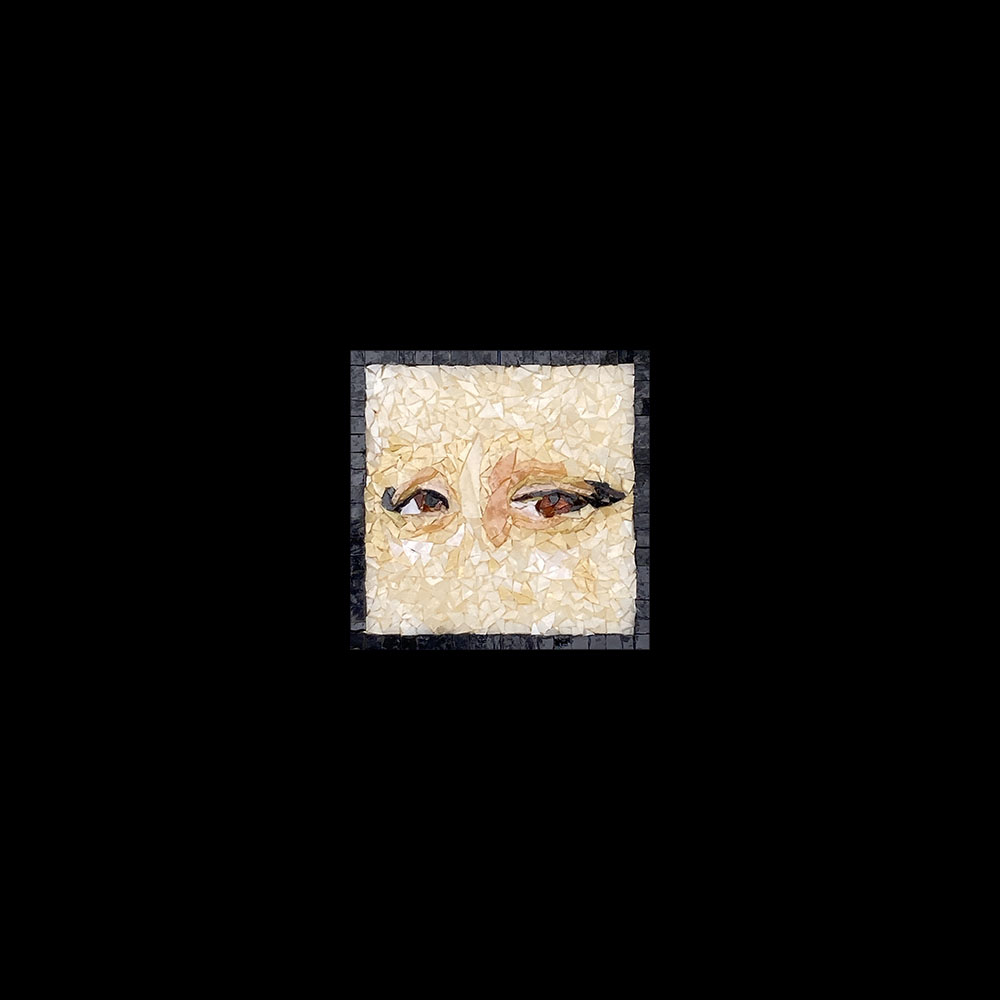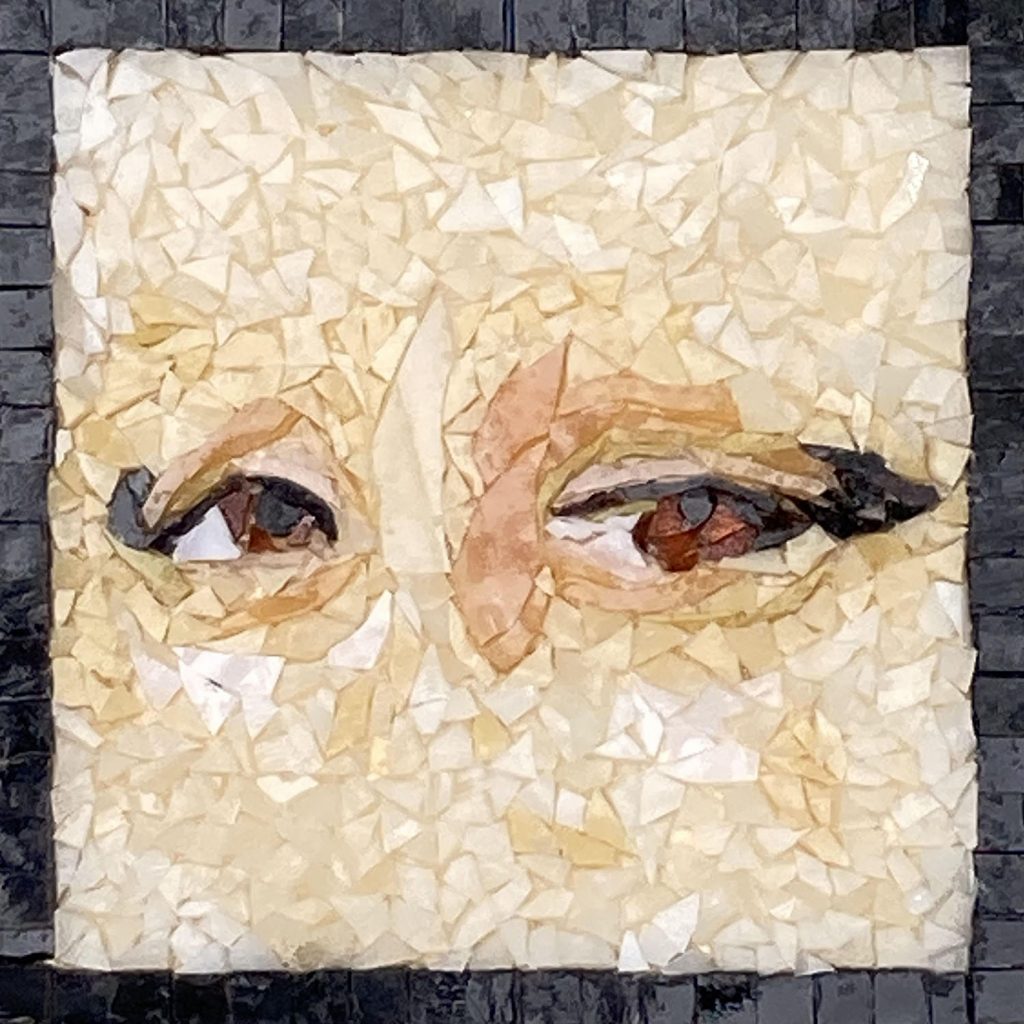Artist Lisa Sunshine emailed us asking about improving one of her recent mosaics, and Natalija and I both agreed that the problems Lisa perceived in her work largely disappeared when the mosaic was viewed at the appropriate distance.
The situation reminded me of a line from the award-winning 1995 movie Clueless, which is the story of a spoiled Beverly Hills high-school girl AND a loose adaptation of Jane Austen’s 1815 novel Emma:
“She’s a full-on Monet…It’s like a painting, see. From far away it’s okay, but up close it’s a big ol’ mess.“
-Cher Horowitz, Clueless
All that being said, I think there is a way that this composition could be made more instantly recognizable at closer viewing without reworking very many tiles.

Of course, I am not talking about any of the tiles in the eyes or the flesh around them.
From what I have seen of Lisa’s skill level, I wouldn’t second guess her rendering.
I’m only suggesting that the detail be extended in one place in a limited way.
Context
I think using highlight and shadow to suggest more of the nose’s length would help the eyes be more instantly recognizable by providing context.
The context of a nose eliminates the need for the viewer to over scrutinize the details of the eyes in an attempt to get some context.
And the brain needs context to see –both in art and in real life, but especially in art.
Think about it like this:
If you were to crop a small part of a Monet painting and show it to viewers, they would have no idea what they were looking at in terms of representation. It would just look like an abstract composition and not some piece of a figure.
That is what happens here when the close-up viewer gets lost in the details of the eye before she can determine that it is a representation of an eye she is looking at.
I don’t think the nose would need to be complete in order to provide this context.
Perhaps only the bridge of the nose needs to be continued down just a little more.

Balance
If this mosaic were still on a temporary surface, I wouldn’t be tempted to fill in the rest of the portrait or crop the composition, at least not at first.
First I would try the highlight and shadow of a suggested nose as indistinctly as possible and yet still distinct enough to give context to the eyes.
The goal would be to not render the nose so distinctly that I then had to add eyebrows to balance the composition.
But if I had to add eyebrows to balance whatever nose detail I added, that could also be done without removing very many tiles.
Personally, I like the original concept, and so the idea is to change it as little as possible, perhaps 5 or 6 tiles in total, maybe less.
Reworking Mosaics
You can rework mosaics recently mounted in white PVA adhesives such as Weldbond by soaking individual tiles using a cotton swab to carefully dispense drops of water.
I keep the mosaic covered with plastic to prevent drying and minimize the number of times water has to be re-applied.
The idea is to apply as little water as possible to prevent surrounding tiles from being loosened. Keeping the mosaic still and horizontal helps.
I soak the tiles for two hours and try prying tiles off with a screwdriver. (Wear gloves and safety glasses.)
I do this by slightly gouging the backer to get underneath the tile.
If the tiles are not loose enough to come off without shattering, I resume soaking and wait another hour.


Leave a Reply